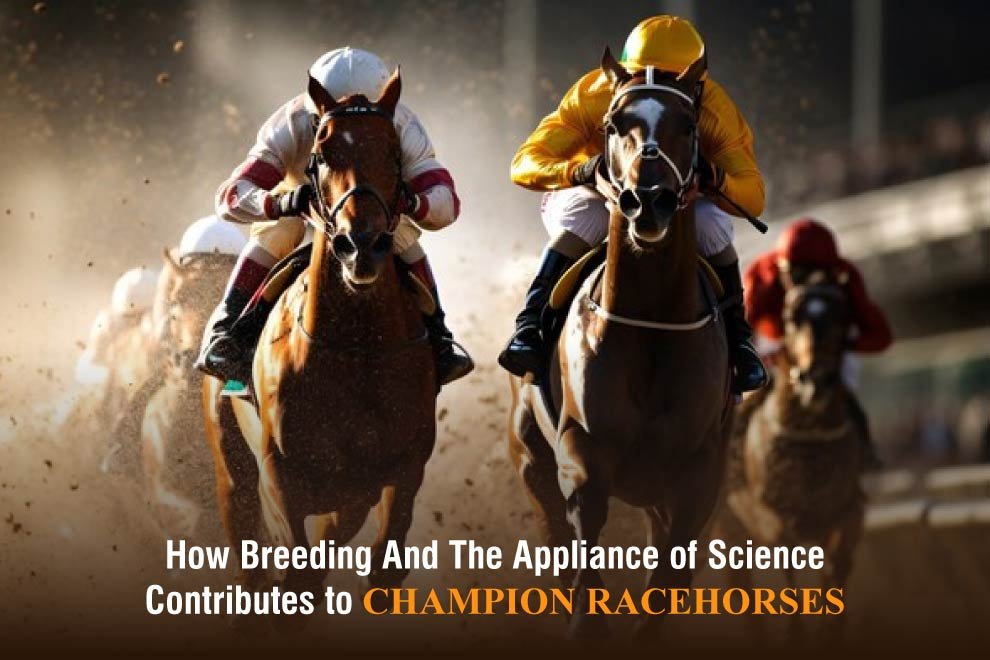Breeding successful racehorses used to be purely down to relying on the equine family tree of good stock. That was the art of making the next superstar horse. The racing industry has often placed a very strong emphasis on pedigree, but the influence of genetics is becoming increasingly influential when searching for the champion racehorse. Recent studies have given rise to a much more open map of genomic markers that could be gold dust for those looking to produce a winner in the paddock.
Pedigree charts to see evidence of a solid ancestry is one thing that has worked on the racetrack. For instance, the 2015 Kentucky Derby winner American Pharoah was from a stock of multiple title holders. It turns out that this thoroughbred was so good, he pulled off the Belmont Stakes betting heist by completing a Triple Crown too.
A trend of selective breeding has been the way to aim for the winner’s circle, relying on the historical qualities of the foundational sires from mainly Arabian and Turk ancestry and combining them with the English foal which has more muscular qualities.
Breeding farms are traditionally where it all begins in taking the stallion or mare to the top of the tree. Ultimately, the farms have been informed by the idea that crossing bloodlines can potentially overcome flaws. A breeder may chose to mate his sprint type mare to a sprint type stallion in hope of producing a fast pair of thundering hooves, or may chose to mate to a classic distance type runner.
However the pressure to produce the best thoroughbred is actually contributing to a more narrow gene pool. That in itself is giving rise to the possibility of inherent weaknesses within the foals. The production line of physically similar but compromised horses produced for a global Thoroughbred market is having a detrimental effect. Horses are having difficulties coping with training regimes which could in turn lead to a negative effect on the racing industry.
However, the Horse Genome Project carried out in 2006 has changed the game. This meant that breeders can now take a far more specific approach to a number of genetic markers. Dr Emmeline Hill is credited with the 2010 discovery of a single gene that was vital in determining the preferred racing distance for a horse. There are broader “elite performance” tests available to find out other crucial specifics including those that indicate height or the functionality of the respiratory system which are designed to have a good level of accuracy.
The criteria needed in producing a top racehorse also relies heavily on physical conformation. Ultimately, this refers to the shape and structure of the animal, factors that are going to heavily influence athletic ability. For instance, American Pharoah had good leg structure, balance through his shoulders, back and hindquarters, indicating that he had the thrust that added up to an elite runner as there was efficiency in his stride.
When looking at a potential star on the track, the biomechanical aspects of its conformation will normally trump the lineage, unless the conformation matches the pedigree. Every thoroughbred is born with certain characteristics which will vary depending on factors that are taken from the parents.
With the increasing influence of genomic testing, tests can be run to on a “stayer or a sprinter” which will ascertain the perfect time to begin their training to match their physical development and capability. The idea of making horses for courses is not so far-fetched. In the 21st century, genetic studies are now being used to capture the genomic and genetic parameters that have a direct impact on performance..
One concern is that the breeder obsession with ancestor duplication of “good genes” has led to many instances of inbreeding over the last five decades. Recent research zoned in on the effect of inbreeding as the model to get a thoroughbred to the racecourse. One study looked at the DNA of more than 6,000 horses born in Europe and Australia, all of which were at least five years old. There was almost a 50 per cent predicted decrease in the odds of a horse getting to the racetrack for every ten per cent increase in DNA inbreeding.
Horse racing is a huge global and multi-million dollar industry, where any developments in scientific knowledge comes at a premium for those tasked with creating a winning machine. The ideal is to provide those in the industry with more information so that they can make better-informed decisions about which horses to breed. After all, the goal of training horses is to get them to the racetrack rather than put them out to pasture.
Also Read: Education Careers In Horse Racing In 2024










